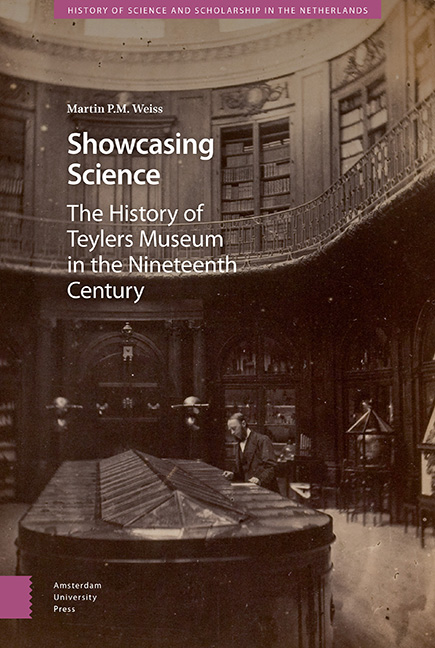Book contents
- Frontmatter
- Contents
- List of Illustrations
- 1 Introduction
- 2 The Birth of a Musaeum
- 3 Van Marum – Empiricism and Empire
- 4 Van der Willigen – Precision and the Discipline of Physics
- 5 Lorentz – Function Follows Form and Theory Leads to Experiment
- 6 Conclusion
- Appendix
- Acknowledgements
- Archives
- Bibliography
- Index
6 - Conclusion
- Frontmatter
- Contents
- List of Illustrations
- 1 Introduction
- 2 The Birth of a Musaeum
- 3 Van Marum – Empiricism and Empire
- 4 Van der Willigen – Precision and the Discipline of Physics
- 5 Lorentz – Function Follows Form and Theory Leads to Experiment
- 6 Conclusion
- Appendix
- Acknowledgements
- Archives
- Bibliography
- Index
Summary
I Summary
Before addressing the main points that have transpired from this study of the history of Teylers Museum from the late eighteenth to the early twentieth century, briefly recalling some of the most important dates in the history of the Museum is probably helpful.
Its history begins in 1778, with the death of Pieter Teyler van der Hulst. Largely upon the initiative of Martinus van Marum, the Oval Room was completed in 1784. The first chapter of this study highlighted how the Oval Room had sprung from the relative ambiguity of Pieter Teyler's last will and testament and how Teylers Museum was just one of many institutions – alongside Teylers Learned Societies and an almshouse – financed by the Teyler Foundation and its five trustees.
Van Marum was appointed director of Teylers Museum – although, rather importantly, a caretaker (kastelein) was simultaneously in charge of the Foundation's collection of fine art, which was also stored at the Museum. Van Marum remained in this position throughout his long life, until his death in 1837. He famously experimented with the world's largest electrostatic generator at the Museum in the 1780s. By the early nineteenth century, however, Van Marum had fallen out with the trustees, and essentially reduced his activities at the Museum to a minimum.
When his successor, Jacob Gijsbert Samuël van Breda, arrived in Haarlem in 1839, he not only took the important decision to preserve scientific instruments that were deemed to be of historical value (because of Van Marum's inactivity the collection had been mellowing for almost three decades), but also found that a new annex to the Museum had been completed, the sole purpose of which was an aesthetically pleasing display of the Foundation's growing collection of paintings by contemporary Dutch artists.
The completion of this annex heralded Teylers Museum's gradual transition from an eighteenth-century repository conceived as an aid to two learned societies and as a nodal point in the republic of letters, to a public art museum with a scientific laboratory attached to it. The gradual removal of scientific research activities from the museum premises began with the construction of a separate chemical laboratory for Van Marum in 1790, but this separation became ever more pronounced once “science” became the exclusive reserve of professionally trained experts.
Information
- Type
- Chapter
- Information
- Showcasing ScienceA History of Teylers Museum in the Nineteenth Century, pp. 333 - 340Publisher: Amsterdam University PressPrint publication year: 2019
